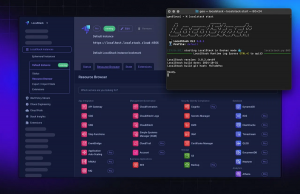Top Emerging Mobile Monetization Strategies: You Need More than One
![]() In recent years, the mobile world has undergone a profound revolution with the arrival of new platforms, devices and marketplaces. The model, crafted by Apple and imitated by others, was a quick success, revolutionizing the way we use mobile.
In recent years, the mobile world has undergone a profound revolution with the arrival of new platforms, devices and marketplaces. The model, crafted by Apple and imitated by others, was a quick success, revolutionizing the way we use mobile.
Clearly the world of mobility has undeniable potential, so much so that more and more developers and companies are attracted by the business opportunities it creates. Competition is growing ever greater – it is not enough to develop an application and count downloads in the app store. To achieve real results, you’ll also need an initial investment in marketing.
eMarketer forecasts U.S. mobile advertising reaching nearly $12B in 2016, up from only $1.5B in 2011. Last year, Gartner predicted that worldwide mobile advertising would reach over $20B after hitting just over $3B in 2011.
Initial Challenges of Mobile Monetization
![]() As in any other market, the important thing is not to arrive, but stay. The challenge is yet to be resolved: how can companies recover the investment they made in mobile applications?
As in any other market, the important thing is not to arrive, but stay. The challenge is yet to be resolved: how can companies recover the investment they made in mobile applications?
Consider the cases of Facebook and Twitter. Almost half of Facebook and Twitter’s monthly users access those sites on their mobile devices, and both companies are ultimately building a business around advertising.
There are different techniques for monetizing apps. But not limited to in-app advertising, monetizing is also used to generate recurring visits, stimulate traffic between your end users.
Mitchell Weisman, LifeStreet’s CEO and founder, suggests developers take a “dual strategy” when it comes to mobile app monetization. A leader in global in-app advertising for Facebook, Apple (iOS) and Android developers, LifeStreet’s RevJet optimization platform reaches 350 million social and mobile app users monthly and has driven over 225 million app installs.
Let’s explore some of the strategies a mobile app publisher can take to monetize their efforts within the current ecosystem.
The mobile ad ecosystem
![]() Today the number of companies, webmasters and bloggers who cross the threshold of developing a mobile application as a spin off for their website or blog are growing, and will only continue to grow. Advertising has always been one of the existing business models practiced regardless of media type. It is therefore natural that advertising has become a standard model for mobile applications, especially when it’s the foundation of the freemium tactic.
Today the number of companies, webmasters and bloggers who cross the threshold of developing a mobile application as a spin off for their website or blog are growing, and will only continue to grow. Advertising has always been one of the existing business models practiced regardless of media type. It is therefore natural that advertising has become a standard model for mobile applications, especially when it’s the foundation of the freemium tactic.
However, a big part of the mobile ad ecosystem will obviously include search. Google is already a master in this arena, and Facebook will at some point enter that space, as Mark Zuckerberg announced last month.
Similar to Facebook’s primary website, the more people that download your application and engage with it, the deeper it works its way into Facebook’s search results, generating more advertising revenue to their platform. In fact, Facebook is already fielding a billion search queries a day even before they’ve even fully entered the search market.
Advertising is a favored way to monetize iPhone or Android applications. The recent stats from internet browser company Opera in its latest State of Mobile Advertising report, indicates that iOS continues to dominate when it comes to monetizing mobile ads, despite the threatening growth of Android. iOS on average drives the highest eCPMs (effective cost per thousand impressions) on its network, and accounts for just over 30% of all traffic, and 34% of all revenue.
In-app purchases is the latest trend that companies like Facebook, Twitter, and Google have started to implement within their applications. Users have a strong tendency to buy content within applications. For example, there are applications on Facebook that sell gifts to send to friends. Another strategy that works very well is the accessories or extra weapons within games. Apps like Angry Birds, for example, offer extra tools (for a cost) that help pass levels and cost real money.
“As mobile experiences evolve, so too will the ad units supporting them. I think that all three companies, but Facebook and Google in particular, will ultimately be successful in shaping — and owning — a good portion of the mobile ad ecosystem,” said Weisman.
Cross-Platform Advertising
![]() Google indicated the vast majority of its $8 billion in revenue is from mobile advertising/search across platforms. Both Apple and Google recognize revenue opportunities with apps, music, videos, books, etc. In recent months Facebook has introduced several opportunities for mobile revenue including Sponsored Stories, page post ads, Promoted Posts and app install ads. These are all directly incorporated into the feed, and advertisers across the board are seeing higher clickthroughs and engagement with these units.
Google indicated the vast majority of its $8 billion in revenue is from mobile advertising/search across platforms. Both Apple and Google recognize revenue opportunities with apps, music, videos, books, etc. In recent months Facebook has introduced several opportunities for mobile revenue including Sponsored Stories, page post ads, Promoted Posts and app install ads. These are all directly incorporated into the feed, and advertisers across the board are seeing higher clickthroughs and engagement with these units.
Weisman said a dual strategy on both advertising and virtual currency and teaming up with several partners can further boost mobile advertising for these platforms.
“Virtual currency tends to only tap into a small number of customers. Combining it with advertising allows developers to monetize their entire customer base.
The best way to balance this strategy, especially for resource-constrained startups, is to work with partners who automate a lot of the processes. The reality is that being a publisher can be a fairly straightforward experience, and a lot of the work can be done in a self-serve manner,” said Weisman.
“Look for companies like LifeStreet that allow app developers to embed a few lines of code and get started as publishers within a few days. Also look for access to real-time self-serve reporting tools so you can quickly make adjustments as needed. The key to this, as with any new endeavor, is to pick your partners carefully and opt for those who have a reputation both for producing good results and for streamlining customer experiences. That way, the employees at the app development firm — be it a startup or a multi-billion dollar entity — can focus on what they do best: making great apps,” he continued.
Optimizing your monetization strategies
MIMVI, Inc., the pure-play search and recommendation technology company, recently launched Mimvi ECHO, the first in a series of Mobile App products and services designed to help all mobile search engines, mobile app developers, owners and app stores to increase exposure to consumers and maximize revenue in the multi-billion dollar mobile app industry.
Another mobile analytics startup, Apsalar, introduced ‘Campaign Source Insights’ marketing tool that lets developers see where their users are coming from on the social networks. The new tool can help developers see in real-time how their spending on Facebook ads is affecting downloads of their mobile apps.
A message from John Furrier, co-founder of SiliconANGLE:
Your vote of support is important to us and it helps us keep the content FREE.
One click below supports our mission to provide free, deep, and relevant content.
Join our community on YouTube
Join the community that includes more than 15,000 #CubeAlumni experts, including Amazon.com CEO Andy Jassy, Dell Technologies founder and CEO Michael Dell, Intel CEO Pat Gelsinger, and many more luminaries and experts.
THANK YOU















